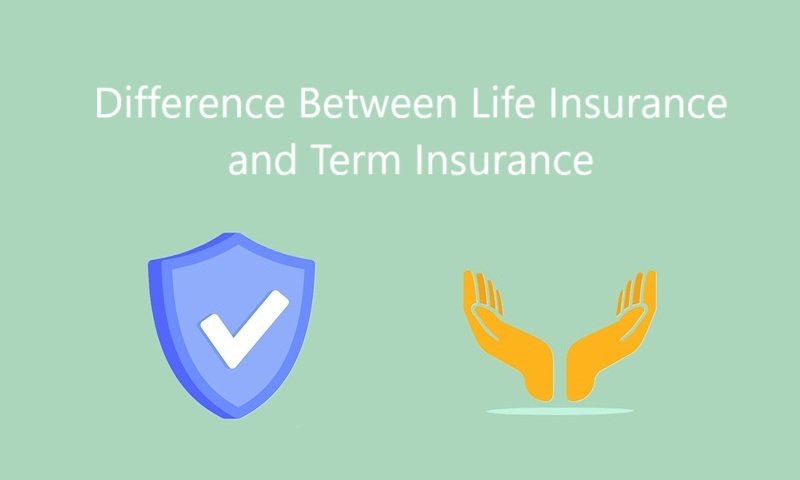
Insurance plays a vital role in financial planning by providing security against unforeseen events. Among the many types of insurance, life insurance and term insurance are two commonly discussed options. While both offer financial protection to policyholders, they differ in terms of purpose, benefits, cost, and duration. This article breaks down the differences between life insurance and term insurance in simple terms.
What Is Life Insurance?
Life insurance is a financial product that provides a combination of protection and savings. It ensures a payout to the policyholder’s beneficiaries in the event of their death. Additionally, some life insurance plans include an investment or savings component that can accumulate over time.
Key Features of Life Insurance:
- Dual Benefit: Offers both life coverage and an investment component.
- Maturity Benefits: Policyholders receive a lump sum if they survive the policy term.
- Higher Premiums: Costs more than term insurance due to the investment component.
- Lifelong Coverage: Some plans provide coverage for the policyholder’s entire life.
- Policy Variants: Includes whole life insurance, endowment plans, and unit-linked insurance plans (ULIPs).
What Is Term Insurance?
Term insurance is a pure protection plan designed to provide financial security to the policyholder’s family in case of their untimely demise. It does not include any investment or savings component, and no benefits are paid if the policyholder survives the term.
Key Features of Term Insurance:
- Pure Protection: Focuses solely on life coverage.
- No Maturity Benefits: No payout if the policyholder outlives the term.
- Affordable Premiums: Significantly cheaper than life insurance.
- Fixed Term: Coverage is provided for a specific period, such as 10, 20, or 30 years.
- High Coverage: Offers substantial coverage amounts at low premiums.
Key Differences Between Life Insurance and Term Insurance
| Aspect | Life Insurance | Term Insurance |
|---|---|---|
| Purpose | Combines protection and savings | Pure protection for financial security |
| Premium | Higher due to investment component | Lower, as it focuses only on life coverage |
| Coverage Period | Can provide lifelong coverage | Limited to a fixed term (e.g., 10, 20, 30 years) |
| Maturity Benefit | Yes, offers payouts if the policyholder survives | No, only pays in case of death during the term |
| Flexibility | Includes savings and investment options | Simple and straightforward |
| Cost-Effectiveness | Suitable for long-term financial planning | Cost-effective for pure risk coverage |
| Target Audience | Ideal for those seeking both savings and coverage | Ideal for those seeking affordable life coverage |
Which One Should You Choose?
The choice between life insurance and term insurance depends on your financial goals, responsibilities, and budget. Here are some guidelines:
- Choose Life Insurance If:
- You want both financial protection and savings/investment options.
- You are looking for a policy that provides lifelong coverage.
- You can afford higher premiums for the dual benefit.
- Choose Term Insurance If:
- You need affordable, high-value life coverage for a specific period.
- You want to secure your family’s financial future in case of your untimely demise.
- You prefer a straightforward policy without investment components.
Conclusion
Both life insurance and term insurance serve as crucial tools for financial security. While life insurance offers a blend of coverage and investment, term insurance focuses purely on providing high-value life coverage at an affordable cost. By understanding the differences and evaluating your financial needs, you can choose the policy that aligns best with your goals.
Proper planning and timely decisions can ensure peace of mind for you and your loved ones.





